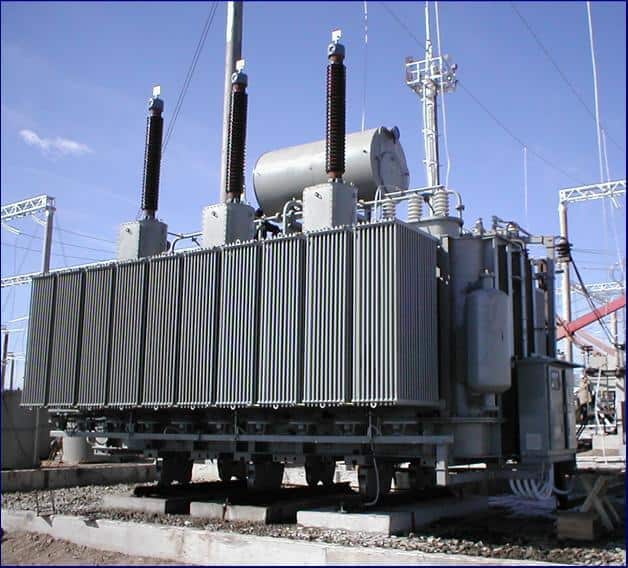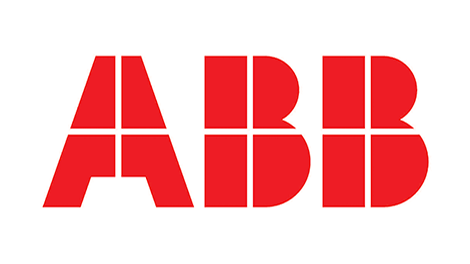ABB – ABB invests in DG Matrix to advance AI data center power optimization
- Collaboration with DG Matrix will develop solid-state transformer solutions
- Platform can replace 10-20 electrical devices with a single, energy-efficient system
- Technology to accelerate optimization of AI data centers, renewable microgrids and industrial electrification
ABB has acquired a minority stake in North Carolina company DG Matrix to support the commercialization of solid-state power electronics for generative AI data centers and renewable microgrids. The company’s Power Router platform replaces conventional systems with an all-in-one solution that is up to five times smaller and has best-in-class energy efficiency of 98 percent. Financial details of the investment were not disclosed.
As global electricity demand grows, legacy infrastructure must evolve to support the needs of AI data centers, smart industries, EV charging and the energy transition. The DG Matrix Power Router platform provides solutions that enhance energy performance while alleviating grid constraints and reducing energy costs. Integrating multiple AC and DC energy sources and loads simultaneously, the solution can replace 10-20 electrical devices with a single system that is more versatile, efficient, and cost-effective.
Massimiliano Cifalitti, President of ABB’s Smart Power division, said: “With the growth of AI and the need to accelerate the energy transition, customers look to ABB for solutions to manage their increasingly complex power demands. DG Matrix has a promising solid-state power electronics solution that can help data centers accelerate AI optimization and enable other industries to run leaner and cleaner. Our partnerships with startups and investment in advanced technologies is delivering on our strategy to make electricity intelligent and efficient for customers.”.
Haroon Inam, CEO of DG Matrix, said: “With a world-class team of business and technology leaders, highly differentiated technology, and a strong IP foundation, DG Matrix is positioned to bring disruption to multiple multi-billion-dollar markets. ABB has a proven track record of driving commercial growth, and together we can accelerate deployment of our solutions to reshape energy infrastructure for a more sustainable future.”
The partnership involves a minority investment in DG Matrix through ABB Electrification Ventures, the venture capital arm of ABB Electrification. With this latest partnership, ABB Electrification Ventures has invested around $80 million in 15 startups since 2021. ABB Electrification Ventures is part of the group-wide venture capital investment framework, ABB Ventures. Since its formation in 2009, ABB Ventures has invested around $450 million into startups that are aligned with its electrification, robotics, automation and motion portfolio.
SourceABB
EMR Analysis
More information on ABB: See full profile on EMR Executive Services
More information on Morten Wierod (Chief Executive Officer and Member of the Group Executive Committee, ABB): See full profile on EMR Executive Services
More information on Timo Ihamuotila (Chief Financial Officer and Member of the Executive Committee, ABB): See full profile on EMR Executive Services
More information on Electrification Business Area by ABB: See the full profile on EMR Executive Services
More information on Giampiero Frisio (President, Electrification Business Area and Member of the Executive Committee, ABB): See full profile on EMR Executive Services
More information on Massimiliano Cifalitti (President, Smart Power Division, Electrification Business Area, ABB): See full profile on EMR Executive Services
More information on ABB Ventures by ABB: https://global.abb/group/en/technology/ventures + Strategic venture capital for breakthrough industrial technology startups
The ABB Group through its business-led venture capital investment framework, ABB Ventures, looks for breakthrough technology companies aligned with ABB’s goal to write the future of industrial electrification and automation. Since its formation in 2009, ABB Ventures has deployed around $450 million into 70 startups spanning a range of sectors including robotics, industrial IoT, AI/machine learning, energy transition, cybersecurity, sustainability, electric mobility, smart buildings, and distributed energy.
More information on Dr. Kurt Kaltenegger (Group Vice President, Head of ABB Technology Ventures, ABB): See full profile on EMR Executive Services
More information on ABB Electrification Ventures by ABB: https://global.abb/group/en/technology/ventures/electrification-ventures + As the world’s demand for electricity grows, we are electrifying the world in a safe, smart and sustainable way as a global technology leader in electrical distribution and management. We collaborate with customers and partners to enable energy efficiency and power a sustainable future for society with our products, solutions and digital technologies.
ABB Electrification Ventures has invested around $80 million in 15 startups since 2021. ABB Electrification Ventures is part of the group-wide venture capital investment framework, ABB Ventures.
More information on Mads Møller (Head of Ventures, ABB Electrification Ventures, ABB): See full profile on EMR Executive Services
More information on DG Matrix (minority investment by ABB): https://www.dgmatrix.com/ + Enabling Electrification, Everywhere with Clean, Secure,
and Reliable Power. DG Matrix is redefining the EV charging, microgrid, and datacenter markets with revolutionary power electronics technology. Our core Power Router technology unlocks seamless integration of multiple energy sources and loads simultaneously with a single power electronics unit that offers unparalleled versatility, efficiency, and size advantages.
More information on Haroon Inam (Co-founder and Chief Executive Officer, DG Matrix, ABB): https://www.dgmatrix.com/about-us
More information on Dr. Subhashish Bhattacharya (Co-founder and Chief Technology Officer, DG Matrix, ABB): https://www.dgmatrix.com/about-us + https://www.linkedin.com/in/harooninam/
EMR Additional Notes:
- AI – Artificial Intelligence:
- Artificial intelligence is the simulation of human intelligence processes by machines, especially computer systems.
- As the hype around AI has accelerated, vendors have been scrambling to promote how their products and services use AI. Often what they refer to as AI is simply one component of AI, such as machine learning. AI requires a foundation of specialized hardware and software for writing and training machine learning algorithms. No one programming language is synonymous with AI, but well a few, including Python, R and Java, are popular.
- In general, AI systems work by ingesting large amounts of labeled training data, analyzing the data for correlations and patterns, and using these patterns to make predictions about future states. In this way, a chatbot that is fed examples of text chats can learn to produce lifelike exchanges with people, or an image recognition tool can learn to identify and describe objects in images by reviewing millions of examples.
- AI programming focuses on three cognitive skills: learning, reasoning and self-correction.
- What are the 4 types of artificial intelligence?
- Type 1: Reactive machines. These AI systems have no memory and are task specific. An example is Deep Blue, the IBM chess program that beat Garry Kasparov in the 1990s. Deep Blue can identify pieces on the chessboard and make predictions, but because it has no memory, it cannot use past experiences to inform future ones.
- Type 2: Limited memory. These AI systems have memory, so they can use past experiences to inform future decisions. Some of the decision-making functions in self-driving cars are designed this way.
- Type 3: Theory of mind. Theory of mind is a psychology term. When applied to AI, it means that the system would have the social intelligence to understand emotions. This type of AI will be able to infer human intentions and predict behavior, a necessary skill for AI systems to become integral members of human teams.
- Type 4: Self-awareness. In this category, AI systems have a sense of self, which gives them consciousness. Machines with self-awareness understand their own current state. This type of AI does not yet exist.
- Machine Learning (ML):
- Developed to mimic human intelligence, it lets the machines learn independently by ingesting vast amounts of data, statistics formulas and detecting patterns.
- ML allows software applications to become more accurate at predicting outcomes without being explicitly programmed to do so.
- ML algorithms use historical data as input to predict new output values.
- Recommendation engines are a common use case for ML. Other uses include fraud detection, spam filtering, business process automation (BPA) and predictive maintenance.
- Classical ML is often categorized by how an algorithm learns to become more accurate in its predictions. There are four basic approaches: supervised learning, unsupervised learning, semi-supervised learning and reinforcement learning.
- Deep Learning (DL):
- Subset of machine learning, Deep Learning enabled much smarter results than were originally possible with ML. Face recognition is a good example.
- DL makes use of layers of information processing, each gradually learning more and more complex representations of data. The early layers may learn about colors, the next ones about shapes, the following about combinations of those shapes, and finally actual objects. DL demonstrated a breakthrough in object recognition.
- DL is currently the most sophisticated AI architecture we have developed.
- Computer Vision (CV):
- Computer vision is a field of artificial intelligence that enables computers and systems to derive meaningful information from digital images, videos and other visual inputs — and take actions or make recommendations based on that information.
- The most well-known case of this today is Google’s Translate, which can take an image of anything — from menus to signboards — and convert it into text that the program then translates into the user’s native language.
- Machine Vision (MV):
- Machine Vision is the ability of a computer to see; it employs one or more video cameras, analog-to-digital conversion and digital signal processing. The resulting data goes to a computer or robot controller. Machine Vision is similar in complexity to Voice Recognition.
- MV uses the latest AI technologies to give industrial equipment the ability to see and analyze tasks in smart manufacturing, quality control, and worker safety.
- Computer Vision systems can gain valuable information from images, videos, and other visuals, whereas Machine Vision systems rely on the image captured by the system’s camera. Another difference is that Computer Vision systems are commonly used to extract and use as much data as possible about an object.
- Generative AI (GenAI):
- Generative AI technology generates outputs based on some kind of input – often a prompt supplied by a person. Some GenAI tools work in one medium, such as turning text inputs into text outputs, for example. With the public release of ChatGPT in late November 2022, the world at large was introduced to an AI app capable of creating text that sounded more authentic and less artificial than any previous generation of computer-crafted text.




- Edge AI Technology:
- Edge artificial intelligence refers to the deployment of AI algorithms and AI models directly on local edge devices such as sensors or Internet of Things (IoT) devices, which enables real-time data processing and analysis without constant reliance on cloud infrastructure.
- Simply stated, edge AI, or “AI on the edge“, refers to the combination of edge computing and artificial intelligence to execute machine learning tasks directly on interconnected edge devices. Edge computing allows for data to be stored close to the device location, and AI algorithms enable the data to be processed right on the network edge, with or without an internet connection. This facilitates the processing of data within milliseconds, providing real-time feedback.
- Self-driving cars, wearable devices, security cameras, and smart home appliances are among the technologies that leverage edge AI capabilities to promptly deliver users with real-time information when it is most essential.
- Multimodal Intelligence and Agents:
- Subset of artificial intelligence that integrates information from various modalities, such as text, images, audio, and video, to build more accurate and comprehensive AI models.
- Multimodal capabilities allows to interact with users in a more natural and intuitive way. It can see, hear and speak, which means that users can provide input and receive responses in a variety of ways.
- An AI agent is a computational entity designed to act independently. It performs specific tasks autonomously by making decisions based on its environment, inputs, and a predefined goal. What separates an AI agent from an AI model is the ability to act. There are many different kinds of agents such as reactive agents and proactive agents. Agents can also act in fixed and dynamic environments. Additionally, more sophisticated applications of agents involve utilizing agents to handle data in various formats, known as multimodal agents and deploying multiple agents to tackle complex problems.
- Small Language Models (SLM) and Large Language Models (LLM):
- Small language models (SLMs) are artificial intelligence (AI) models capable of processing, understanding and generating natural language content. As their name implies, SLMs are smaller in scale and scope than large language models (LLMs).
- LLM means large language model—a type of machine learning/deep learning model that can perform a variety of natural language processing (NLP) and analysis tasks, including translating, classifying, and generating text; answering questions in a conversational manner; and identifying data patterns.
- For example, virtual assistants like Siri, Alexa, or Google Assistant use LLMs to process natural language queries and provide useful information or execute tasks such as setting reminders or controlling smart home devices.
- Substation:
- A power station is where the power is generated. A sub station is where power is split apart, distributed and spread further into the grid. A substation is a part of an electrical generation, transmission, and distribution system.
- Substations contain the specialist equipment that allows the voltage of electricity to be transformed (or ‘switched’). The voltage is stepped up or down through pieces of equipment called transformers, which sit within a substation’s site.
- Substations typically include:
- Transformers: The core components for voltage transformation.
- Circuit Breakers: To isolate and protect equipment.
- Switchgear: For controlling and protecting the flow of electricity.
- Shunt Reactors (sometimes): Used to improve system stability.
- Other equipment: Measuring instruments, control panels, etc.
- Transformers (Distribution Transformers, Power Transformers, Traction Transformers, HVDC Converters, Solid State Transformers (SST)):
- A distribution transformer is the type of transformer that performs the last voltage transformation in a distribution grid. It converts the voltage used in the transmission lines to one suitable for household and commercial use, typically down to 240 volts.
- The transformer is classified into three types based on the voltage level produced: Step down, Step up, and an isolation transformer.
- Transformers changes from high voltage to low voltage, used in homes and businesses. The main function of this is to reduce the voltage to provide isolation between the two windings as primary and secondary. This transformer distributes electricity to remote areas generated from power plants.
- While transformer stations are linked to high/medium-voltage transmission systems, electrical substations are designed to support and transform lower voltages.
- Distribution transformers always operate at a load less the rated full load. Power transformers always operate at full load. Distribution transformers are designed to give maximum efficiency at 60 to 70% of the rated load. Power transformers have maximum efficiency at full load.
- Power Transformers are used in transmission network of higher voltages for step-up and step down application (400 kV, 200 kV, 110 kV, 66 kV, 33kV) and are generally rated above 200MVA.
- Distribution Transformers are used for lower voltage distribution networks as a means to end user connectivity. (11kV, 6.6 kV, 3.3 kV, 440V, 230V) and are generally rated less than 200 MVA.
- Traction transformers are special transformers used in railway systems to step down high-voltage AC power from the overhead catenary to the required voltage for the train’s traction system. These transformers are typically medium-frequency transformers with ratings ranging from 25 kVA to 25 MVA.
- In HVDC station, the converter transformer steps-up the generated AC voltages to the required level. The converter station takes the electric power from the three-phase AC network and rectifies it to DC, which is then transmitted through overhead lines (or cables).
- A solid state transformer (SST) is an ac–ac converter that can replace conventional transformers used in distribution systems. SST is also known as power electronic transformer (PET) or intelligent universal transformer (IUT). SST uses power electronic converters in conjunction with a high-frequency transformer, actively controls voltage and current and operates at high frequencies, allowing for smaller transformer size.

- Shunt Reactor:
- Shunt reactors (SRs) are used in high voltage energy transmission systems to control the voltage during load variations. Depending on the voltage requirement needs, shunt reactors are switched on or off to provide reactive power compensation.
- A shunt reactor is an absorber of reactive power, thus, increasing the energy efficiency of the system. It is the most compact device commonly used for reactive power compensation in long high-voltage transmission lines and in cable systems. The shunt reactor can be directly connected to the power line or to a tertiary winding of a three-winding transformer. The shunt reactor could be permanently connected or switched via a circuit breaker.
- Shunt reactor is same as power transformer but it has only one winding per phase as compared to power transformer. Shunt reactors are used to increase the power and energy system efficiency as it absorb & compensate the reactive power in cables and long high voltage transmission lines.

- Grid, Microgrids, DERs and DERM’s:
- The power grid is a network for delivering electricity to consumers. The power grid includes generator stations, transmission lines and towers, and individual consumer distribution lines.
- The grid constantly balances the supply and demand for the energy that powers everything from industry to household appliances.
- Electric grids perform three major functions: power generation, transmission, and distribution.
- A microgrid is a small-scale power grid that can operate independently or collaboratively with other small power grids. The practice of using microgrids is known as distributed, dispersed, decentralized, district or embedded energy production.
- Smart Grid is any electrical grid + IT at all levels . Micro Grid is a group of interconnected loads and DERs (Distributed energy resources) within a clearly defined electrical and geographical boundaries witch acts as a single controllable entity with respect to the main grid.
- Distributed energy resources (DERs) are small-scale electricity supply (typically in the range of 3 kW to 50 MW) or demand resources that are interconnected to the electric grid. They are power generation resources and are usually located close to load centers, and can be used individually or in aggregate to provide value to the grid.
- Common examples of DERs include rooftop solar PV units, natural gas turbines, microturbines, wind turbines, biomass generators, fuel cells, tri-generation units, battery storage, electric vehicles (EV) and EV chargers, and demand response applications.
- Distributed energy resources management systems (DERMS) are platforms which helps mostly distribution system operators (DSO) manage their grids that are mainly based on distributed energy resources (DER).
- DERMS are used by utilities and other energy companies to aggregate a large energy load for participation in the demand response market. DERMS can be defined in many ways, depending on the use case and underlying energy asset.
- Power Electronics and Solid-State Power Electronics:
- Power electronics is the technology associated with the efficient conversion, control and conditioning of electric power by static means from its available input form into the desired electrical output form.
- Power electronics is the branch of electrical engineering that deals with the processing of high voltages and currents to deliver power that supports a variety of needs. it deals with the conversion and control of electric power using electric converters based on the switch of semiconductors.
- Solid-State Power Electronics is a more specific subset of power electronics that focuses on using solid-state semiconductor devices (like diodes, transistors, and thyristors) to perform power conversion and control.
- Solid-State refers to electronic components that are built entirely from solid materials, typically semiconductors.
- Power Conversion:
- In electrical engineering, power conversion is the process of converting electric energy from one form to another. A power converter is an electrical device for converting electrical energy between alternating current (AC) and direct current (DC). It can also change the voltage or frequency of the current.
- AC (Alternating Current) & DC (Direct Current) & UC (Universal Current):
- Direct current (DC) is an electric current that is uni-directional, so the flow of charge is always in the same direction. As opposed to alternating current, the direction and amperage of direct currents do not change. It is used in many household electronics and in all devices that use batteries.
- Direct current has many uses, from the charging of batteries to large power supplies for electronic systems, motors, and more. Very large quantities of electrical energy provided via direct-current are used in smelting of aluminum and other electrochemical processes.
- in contrast to AC power, DC power is entirely made up of active power, meaning that there are almost no losses due to the capacitance of wires when DC power travels long distances. In fact, high voltage AC transmission systems have losses of 7% to 15% with aboveground transmission.
- Alternating Current is used in homes as Direct current can not be easily stepped up or stepped down with the help of transformers whereas alternating current can easily be converted from low voltage to high voltage or vice-versa with the help of transformers.
- “UC” is used for “Universal Current”, that translates to “either DC or AC”. So a 24 V UC input can accept either 24 V AC or 24 V DC.


